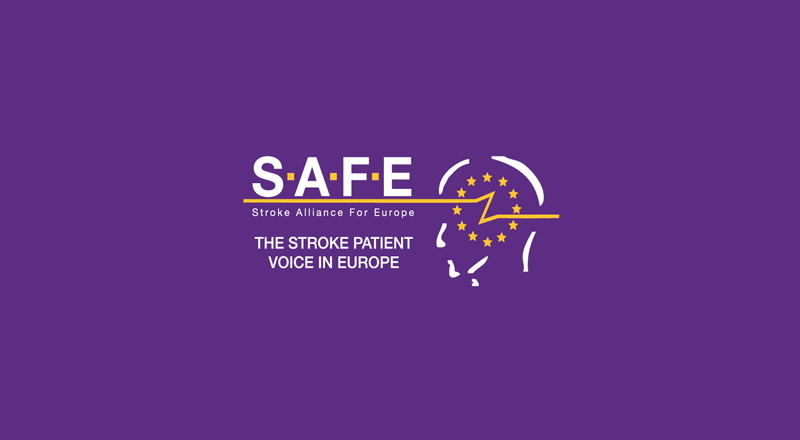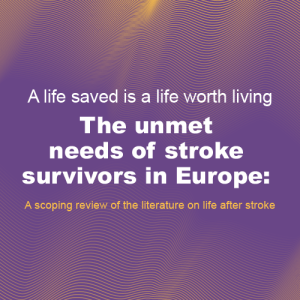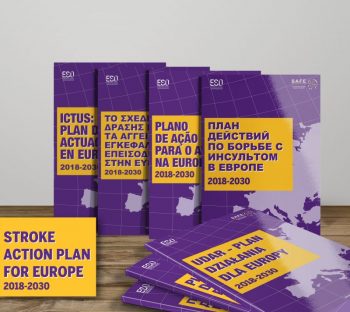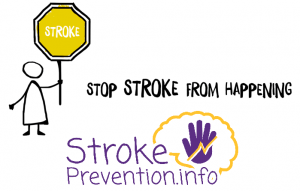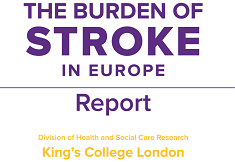
Burden of Stroke Report, 2017
The Stroke Alliance for Europe, as the largest pan-European organisation of stroke patient support organisations and the European Stroke Organisation, the largest European organisation of stroke professionals have increasingly been working together and are committed to sharing expertise and best practice to ensure the best outcomes for stroke patients.
Together we are currently developing the revised Stroke Action Plan for Europe which will be launched in May 2018. SAFE will follow this with the results of our next key piece of commissioned research, the Economic Impact of Stroke in Europe.
The primary goal of this study by a health economics team from the University of Oxford is to increase the priority given to stroke and to reinforce and underpin the influencing of European and country-level policy work already underway as a result of the Burden of Stroke Report.
The Economic Impact of Stroke in Europe
Stroke is responsible for 9% of all deaths each year in the EU and it is also the largest cause of adult disability. Total costs for stroke were estimated at €64 billion across Europe in 2010 and yet it is hugely under-funded in comparison to other chronic conditions. The most important risk factors for stroke are age, high blood pressure, obesity and diabetes, all of which are rising in a larger and increasingly elderly population living unhealthy lifestyles.
Recent modest improvements in acute care mean that more people are surviving stroke, but with impairment, with the consequence being that we have a major health economic and social burden catastrophe waiting to happen. This will severely impact all EU countries, but especially those where inequalities in stroke healthcare are already known.
Our economic impact report will present evidence in a lay reader-friendly and easily digestible format on the economic burden of stroke at country and family level. This will be used by SAFE and partner organisations to help build a case for investment in different areas of the stroke care pathway.
This research will provide a breakdown of the analysis for each country into direct healthcare, direct non-medical and indirect costs is needed. This should cover costs in social care services, and the wider societal and family and carer costs, such as days of income lost due to disability, and payments in day care, welfare and nursing home costs.
In addition, the research will:
Develop projections of these stroke costs for the next 10 years and 20 years, based on scenarios of likely changes in the demography and epidemiology of stroke as narrated in the Burden of Stroke report.
Develop recommendations on how best to reduce the economic impact of rising numbers of stroke. Identify which are the main drivers of these rising costs. Prevention, improvement of stroke care, support mechanisms, and investment in stroke research should all be considered.
SAFE wishes to raise the profile of the issues detailed above and develop a robust case ideally, or at least to advance the evidence and discussion, that will allow bringing this issue to the forefront across a wider audience, including government and policy makers. To do this, we need to develop a clearer understanding of the current economic, societal and social costs of stroke as well as a calculation of how further investment could impact on this and help reduce the burden of stroke.
Future benefit of the research
In line with a new focus on stroke at the WHO and in support of the Commission’s ‘State of Health in the EU Roadmap’, we are hoping that this project will inform future EU health policy. Given the importance of a ‘Health in All Policies’ approach, the study will also draw important recommendations on how integrated approaches to stroke prevention and care, as well as improved care co-ordination between health and social services, can reduce the existing social and economic burden for the benefit of stroke patients and European society as a whole.

